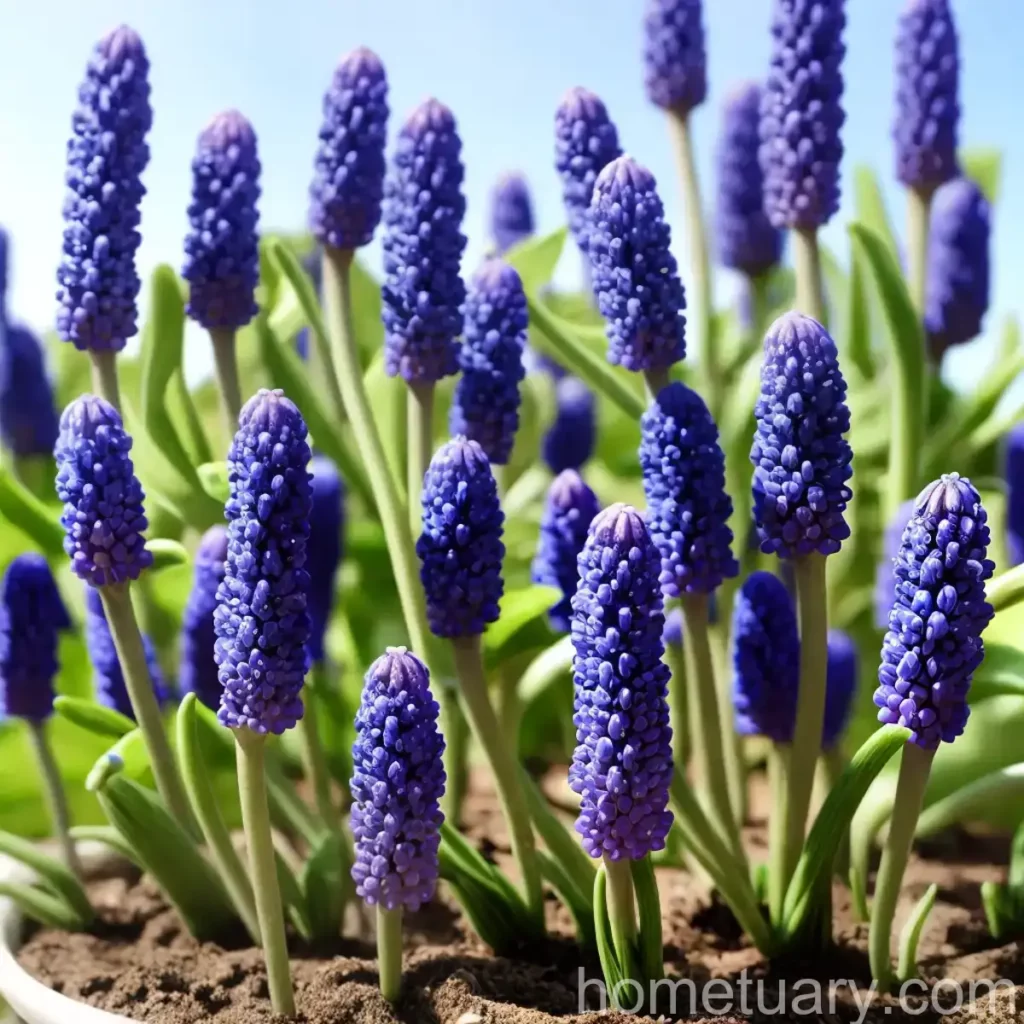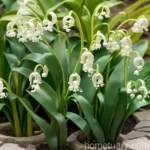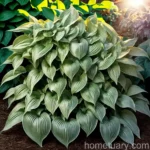The Grape Hyacinth (Pseudomuscari Azureum): A Comprehensive Guide
The grape hyacinth, scientifically known as Pseudomuscari azureum, is a charming perennial plant that belongs to the Asparagaceae family. It is renowned for its clusters of small, bell-shaped flowers that resemble bunches of grapes, hence its common name. With its delightful blooms and easy maintenance, it has become a favorite in gardens and landscapes around the world. In this comprehensive guide, we will delve into the intricacies of this captivating plant, covering its culture, uses, care requirements, common diseases, pests, and much more.
What is the Grape Hyacinth (Pseudomuscari Azureum)?
The grape hyacinth, Pseudomuscari azureum, is a species of flowering plant native to the eastern Mediterranean region, including countries such as Turkey and Iran. It is a bulbous perennial that typically blooms in the spring, producing dense, cylindrical racemes of small, tubular, sky-blue flowers. The plant’s foliage consists of narrow, strap-like leaves that emerge from the base and often form a dense clump.
This charming plant is best known for its striking appearance and its ability to naturalize and multiply, making it a popular choice for borders, rock gardens, and naturalized areas. It is also a valuable addition to flower arrangements, adding a touch of color and elegance.
Key Takeaways – Pseudomuscari Azureum
Before we explore the specific aspects of grape hyacinth care and cultivation, let’s summarize some key points about the plant:
- Scientific Name: Pseudomuscari azureum
- Common Name: Grape hyacinth
- Family: Asparagaceae
- Native Habitat: Eastern Mediterranean region
- Bloom Time: Typically blooms in the spring
- Flower Color: Sky-blue
- Foliage: Narrow, strap-like leaves
- Characteristics: Bulbous perennial with dense, cylindrical racemes of flowers
Now that we have a general understanding of the grape hyacinth, let’s delve into the specifics of how to care for and grow this delightful plant.
Culture
Uses
The grape hyacinth, Pseudomuscari azureum, offers a range of uses and benefits, both in the garden and beyond. Here are some key uses of this charming plant:
-
Garden Ornament: The visually appealing flowers of the grape hyacinth make it a delightful addition to garden borders, rock gardens, and naturalized areas. Its ability to multiply and naturalize further enhances its ornamental value.
-
Cut Flower: The vibrant blue blossoms of the grape hyacinth are often used in floral arrangements, adding a splash of color and a touch of elegance to bouquets and centerpieces.
-
Pollinator Attraction: The flowers of the grape hyacinth are known to attract pollinators such as bees and butterflies, making it a valuable asset for supporting local ecosystems.
-
Medicinal Properties: While not commonly utilized for medicinal purposes, some traditional and folk medicine systems may include the grape hyacinth for its potential health benefits. However, it’s essential to consult reliable sources for any medicinal use.
Water
Grape hyacinths are relatively low-maintenance when it comes to water requirements. They prefer well-draining soil and are somewhat drought-tolerant once established. Here are some essential considerations regarding watering:
-
Establishment: During the initial planting and establishment phase, it is crucial to ensure that the soil remains consistently moist but not waterlogged. Adequate water is essential for the development of strong, healthy root systems.
-
Mature Plants: Once the grape hyacinth plants are established, they generally require minimal supplemental watering, relying on natural rainfall to meet their moisture needs. However, during prolonged dry spells, providing occasional deep watering can be beneficial, particularly in regions with limited precipitation.
-
Watering Practices: When watering grape hyacinths, it is advisable to apply water directly to the soil around the plants, aiming to keep the foliage dry. This practice can help reduce the risk of fungal diseases and promote overall plant health.
Sunlight
Grape hyacinths typically thrive in locations that receive full to partial sunlight. Consider the following points related to sunlight requirements:
-
Optimal Sun Exposure: To encourage vigorous growth and abundant flowering, it is best to plant grape hyacinths in areas that receive ample sunlight. A minimum of 6 hours of direct sunlight per day is generally recommended for optimal bloom production.
-
Partial Shade: While grape hyacinths prefer full sunlight, they can tolerate partial shade, particularly in regions with intense afternoon sun or during periods of extreme heat. In such cases, providing a few hours of morning sunlight or dappled light can support healthy growth.
-
Indoor Cultivation: If cultivating grape hyacinths in containers, ensure that they receive sufficient natural light indoors or place them in a location where they can benefit from adequate sunlight exposure.
Fertilizer
The fertilization needs of grape hyacinths are relatively modest, and excessive fertilization should be avoided to prevent potential issues such as soft growth or reduced flowering. Consider the following guidelines for fertilizing grape hyacinths:
-
Soil Enrichment: Prior to planting grape hyacinth bulbs, amending the soil with organic matter such as compost or well-rotted manure can provide essential nutrients and improve soil structure, promoting healthy growth.
-
Spring Feeding: In the spring, when the foliage begins to emerge, applying a balanced, slow-release fertilizer according to the manufacturer’s recommendations can support the development of robust plants and vibrant blooms.
-
Minimal Fertilization: Once the grape hyacinths have finished flowering, minimal or no additional fertilization is typically necessary, as excessive nutrient levels can lead to issues such as floppy growth and reduced bulb vigor.
Soil
The selection of well-draining, fertile soil is crucial for the successful cultivation of grape hyacinths. Consider the following soil-related factors:
-
Drainage: Grape hyacinths thrive in well-draining soil and are susceptible to issues such as bulb rot in waterlogged or poorly drained conditions. Incorporating organic matter into the soil can enhance its drainage capabilities.
-
pH Levels: The ideal soil pH for grape hyacinths ranges from slightly acidic to neutral. Conducting a soil test can provide insights into the current pH levels and guide the necessary amendments for optimal plant growth.
-
Soil Composition: A blend of loamy soil with good drainage is well-suited for grape hyacinths. Avoid heavy clay soils that retain excessive moisture, as they can predispose the bulbs to rot and other issues.
Pruning
Grape hyacinths generally require minimal pruning, and their maintenance needs are relatively straightforward. Here are some key points to consider regarding pruning:
-
Faded Flowers: To maintain the plant’s appearance and redirect its energy towards bulb development, removing faded flowers once they have finished blooming can be beneficial.
-
Foliage Care: After the flowering period, allow the foliage of grape hyacinths to senesce and yellow naturally. Avoid cutting back the foliage prematurely, as it plays a crucial role in replenishing the bulb’s energy reserves for the following year’s blooms.
-
Post-Blooming Care: Once the foliage has completely yellowed and withered, it can be gently removed to tidy up the planting area. This typically occurs in late spring to early summer, depending on the local climate.
Propagation
Grape hyacinths can be propagated through division or by planting their offset bulbs. Consider the following options for propagating grape hyacinths:
-
Division: Every few years, clumps of grape hyacinths can be carefully lifted and divided, with the individual bulbs replanted in desired locations. Division can help rejuvenate overcrowded plantings and promote healthier growth.
-
Offset Bulbs: When the grape hyacinth bulbs produce offsets or daughter bulbs, these can be carefully separated and planted in suitable areas to establish new plants.
-
Seed Propagation: While grape hyacinths can be grown from seeds, this method is less commonly practiced due to the slow growth rate of seedlings and the ease of propagation through bulb division.
Container Popularity
While grape hyacinths are commonly planted in garden borders and naturalized areas, they also thrive in containers and make charming additions to patio displays and indoor settings. Consider the following points related to growing grape hyacinths in containers:
-
Container Selection: Choose well-draining containers with adequate drainage holes to provide optimal growing conditions for grape hyacinths. Terracotta, ceramic, or plastic pots can all be suitable options.
-
Soil Mix: Utilize a well-draining potting mix that is formulated for bulbs or perennials. Regularly ensure that the soil remains adequately moist but not waterlogged.
-
Sunlight Requirements: Position the containers in locations that receive at least 6 hours of direct sunlight per day, as grape hyacinths thrive in full to partial sunlight.
-
Overwintering: In regions with harsh winter climates, containers of grape hyacinths can be overwintered in a sheltered location, such as an unheated garage or porch, to protect the bulbs from extreme cold.
Common Diseases
While grape hyacinths are relatively resilient, they can be susceptible to certain diseases, particularly in conditions that are overly moist or poorly ventilated. Some common diseases that may affect grape hyacinths include:
-
Botrytis Blight: This fungal disease, also known as gray mold, can cause grayish-brown lesions on the foliage and flowers of grape hyacinths, particularly in humid conditions. Promoting good air circulation and avoiding overhead watering can help prevent botrytis blight.
-
Bulb Rot: Excessive soil moisture and poor drainage can predispose grape hyacinth bulbs to rotting diseases. To mitigate the risk of bulb rot, ensure that the planting site has well-draining soil and avoid overwatering.
-
Leaf Spot: Leaf spot diseases can manifest as small, dark lesions on the foliage of grape hyacinths. Providing adequate spacing between plants and avoiding overhead watering can help reduce the risk of leaf spot.
Disease Diagnosis
When observing potential symptoms of disease on grape hyacinths, it is essential to accurately diagnose the issue to implement appropriate management strategies. Some diagnostic considerations for common grape hyacinth diseases include:
-
Symptom Recognition: Carefully observe the appearance of any lesions, discoloration, or abnormalities on the foliage, stems, or flowers of grape hyacinths to identify potential disease indicators.
-
Environmental Assessment: Evaluate the prevailing environmental conditions, including moisture levels, air circulation, and sunlight exposure, to assess whether the plant may be experiencing conditions conducive to disease development.
-
Professional Consultation: If unsure about the cause of specific symptoms or the appropriate course of action, consulting with a local horticulturist, extension service, or plant diagnostic laboratory can provide valuable insights and guidance.
Common Pests
In addition to certain diseases, grape hyacinths can also be affected by pests that target their foliage, bulbs, or flowers. Some common pests that may pose challenges to grape hyacinths include:
-
Narcissus Bulb Fly: The larvae of this pest feed on the bulbs of grape hyacinths and related plants, leading to rot and potential plant decline. Protecting bulbs with physical barriers or applying appropriate insecticides can help manage narcissus bulb fly infestations.
-
Slugs and Snails: These mollusks can feed on the foliage and flowers of grape hyacinths, resulting in ragged-edged damage. Employing cultural control methods or using slug and snail baits can help reduce feeding damage.
-
Rodent Damage: Rodents such as voles and mice may consume grape hyacinth bulbs, particularly in areas with high rodent populations. Implementing protective measures such as underground barriers can deter rodent feeding.
-
Deer and Rabbits: In some regions, deer and rabbits may browse on the foliage and flowers of grape hyacinths, potentially causing damage. Utilizing fencing or repellents can help mitigate the impact of deer and rabbit feeding.
Botanist’s Tips
To optimize the growth and performance of grape hyacinths, it is helpful to consider the following botanist’s tips and best practices:
-
Planting Depth: When planting grape hyacinth bulbs, ensure that they are positioned at a depth of approximately 3 to 4 inches (7.5 to 10 cm) in the soil. This depth can provide insulation and protection for the bulbs while allowing the foliage to emerge naturally.
-
Naturalizing: Due to their propensity to multiply and naturalize, grape hyacinths can be planted in drifts or clusters to create visually stunning displays of blue flowers. Their naturalizing habit can transform landscapes and add a touch of charm to garden settings.
-
Seasonal Care: While grape hyacinths are generally low-maintenance, providing occasional monitoring and care throughout the growing season can help ensure optimal plant health and long-term vigor.
Fun Facts
To further appreciate the allure of grape hyacinths, here are some intriguing and delightful fun facts about the plant:
-
Botanical Origins: The name “hyacinth” is derived from a figure in Greek mythology, Hyakinthos, and is associated with a tragic tale of love and transformation.
-
Floral Symbolism: In the language of flowers, grape hyacinths are often associated with sincerity, constancy, and the arrival of spring, making them meaningful additions to floral arrangements and garden compositions.
-
Naturalization Ability: Once established, grape hyacinths can readily multiply and spread, often forming extensive colonies of charming blue blooms that create a captivating spectacle in the landscape.
-
Pollinator Support: The nectar-rich flowers of grape hyacinths serve as valuable food sources for early-season pollinators, including bees and other beneficial insects that contribute to garden biodiversity.
Links to External Resources
For additional information and resources on grape hyacinth (Pseudomuscari azureum) care, cultivation, and related topics, the following external links are recommended:
- Royal Horticultural Society – Grape Hyacinths
- University of Florida IFAS Extension – Grape Hyacinth
- Missouri Botanical Garden – Pseudomuscari azureum
These resources offer valuable insights, tips, and guidance for growing and enjoying the beauty of grape hyacinths in various garden settings.
In conclusion, the grape hyacinth (Pseudomuscari azureum) stands as a delightful, resilient, and versatile plant that contributes charm, color, and ecological value to landscapes and gardens. With its captivating blue blooms, naturalizing tendencies, and minimal maintenance requirements, it continues to captivate gardeners and plant enthusiasts worldwide, enhancing outdoor spaces with its timeless allure.
By applying the principles of proper culture, attentive care, and thoughtful design, grape hyacinths can grace gardens and landscapes with their enchanting presence, enriching the tapestry of the natural world and providing an enduring source of beauty and inspiration.
The blog post offers a comprehensive guide to cultivating and caring for the grape hyacinth (Pseudomuscari azureum), covering various aspects from culture and uses to specific care requirements, diseases, and pests. The information is presented in a detailed, user-friendly manner, and the external resource links provide further opportunities for readers to expand their knowledge and expertise on the subject.















